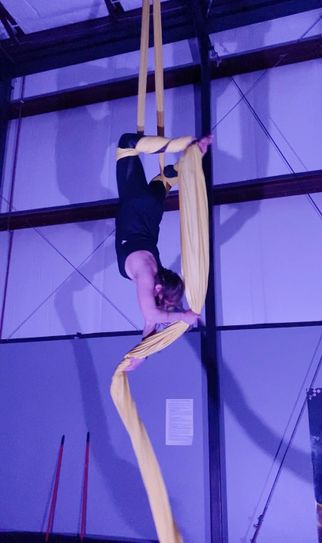Every weekend, I run away to the circus. To be specific, I take aerial classes at a circus arts studio.

I recently joined the Alteryx team, where I’ve quickly learned that I’m not necessarily leaving the circus behind when I enter the data analytics world. One of the first things I got cracking on was learning Alteryx Designer. And believe it or not, learning Designer feels a lot like learning aerial silks: it’s an adrenaline rush of navigating a tricky situation and surprising yourself when you find out you can do it.
In the aerial arts, I solve a puzzle every time I get up in the air. And I’m also solving a puzzle every time I open Designer.
Somewhere between learning the Input Data tool and solving my first Weekly Challenge, it hit me that putting together a workflow in Designer is a similar creative process to putting together an aerial sequence (we even call it an aerial “flow”). That’s when things started clicking.
Here are some best practices I’ve picked up so far that apply to both aerial and Alteryx:
1. Play around with different pathways.

There are multiple, maybe even infinite, pathways to get to the same end outcome. You could find a hundred methods even to just climb up a set of aerial silks.
The same goes for answering questions using Alteryx. Some pathways are more elegant and efficient than others. Some have more style and flair. Sometimes order matters, and often it doesn’t. If there were only one way to do things, neither aerial acts nor Alteryx workflows would be any fun.
2. Develop your “left side.”
Aerial performers get in a bad habit of doing everything on one side. I prefer my right side, so I execute all my tricks on my right. Whenever I try to do something with my left arm, it hangs there like a noodle because it has no muscle memory.
As I’m learning Designer, I’m forcing myself to actively develop my “left side,” the tools and techniques that I’m less comfortable with (looking at you, Formula Tool). That way, I won’t get stuck relying on one approach any time I’m facing a challenge.
3. Learn the theory behind what you’re doing.
Aerial theory means the mechanics behind why things work the way they work. There are certain ways of wrapping the silk that create friction and tension points that keep you secure. If you understand the theory, you’re better equipped to make informed decisions.

In the same way, I’ve been brushing up on the “why” behind the “how” of data analytics. The interactive lesson modules like Data Essentials help me make sure I have foundational knowledge about handling data.
4. Leverage different apparatuses.
In the aerial world, your apparatus is what you’re using to get up in the air: silks, sling, flying trapeze, lyra (hoop), rope and so on.
Like circus apparatuses, each platform in the data ecosystem brings its own strengths. Snowflake, for instance, offers massive scalability in the cloud. Tableau delivers impactful visualizations. UiPath makes it faster to process data from all kinds of sources and even non-API formats.
The best circus acts bring multiple apparatuses together. As I learn the ins and outs of Alteryx, it’s also been amazing to learn how seamless it is to combine Alteryx with other platforms. If the modern data stack is a three-ring circus, we Alteryx users get to be the ringleader making the whole show run smoothly.
5. Lean on your community.
I suspect that anyone who enjoys using Alteryx would enjoy learning the aerial arts, and vice versa. We’re problem solvers who don’t mind getting ourselves tangled in knots. We’re thrill seekers who charge headfirst into intimidating scenarios, whether that comes from being 20 feet high or from date-time formatting. And everyone is obsessed with each other’s progress, admiring others’ flows and jumping in without hesitation to offer support.
The data community has more in common with the circus community than I ever expected. I already feel right at home.
- Alex, the Analytical Aerialist





